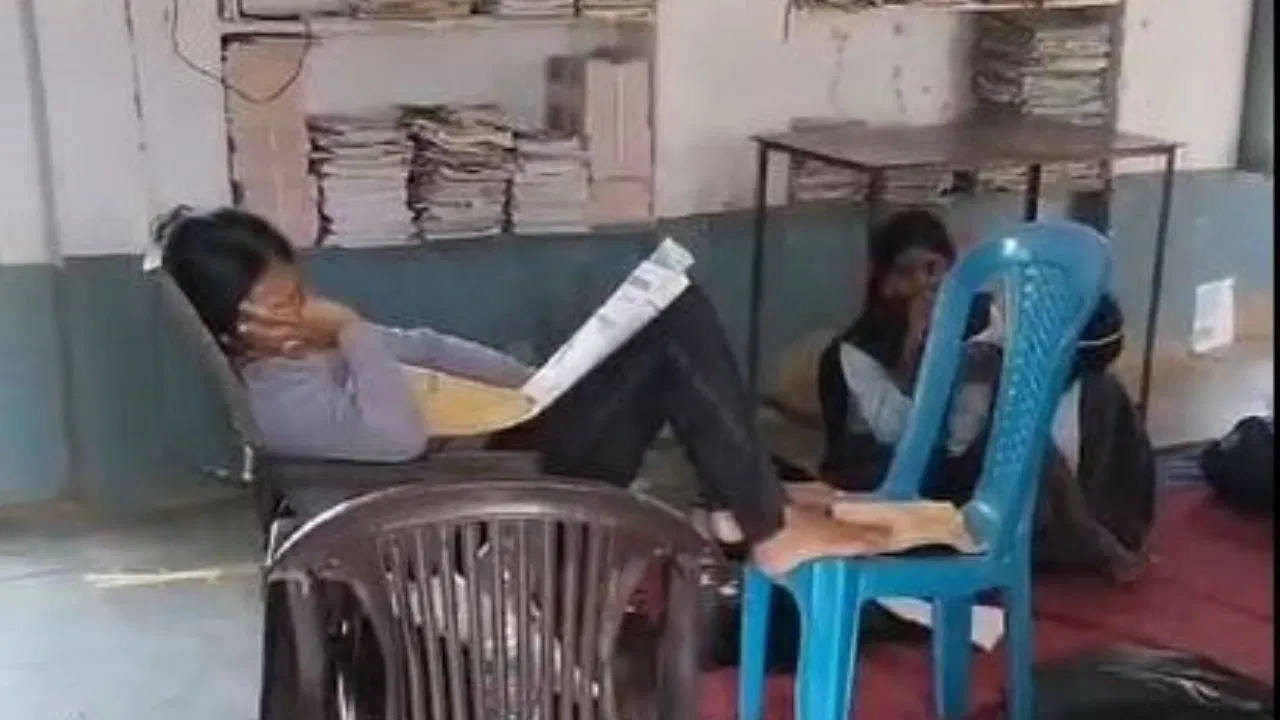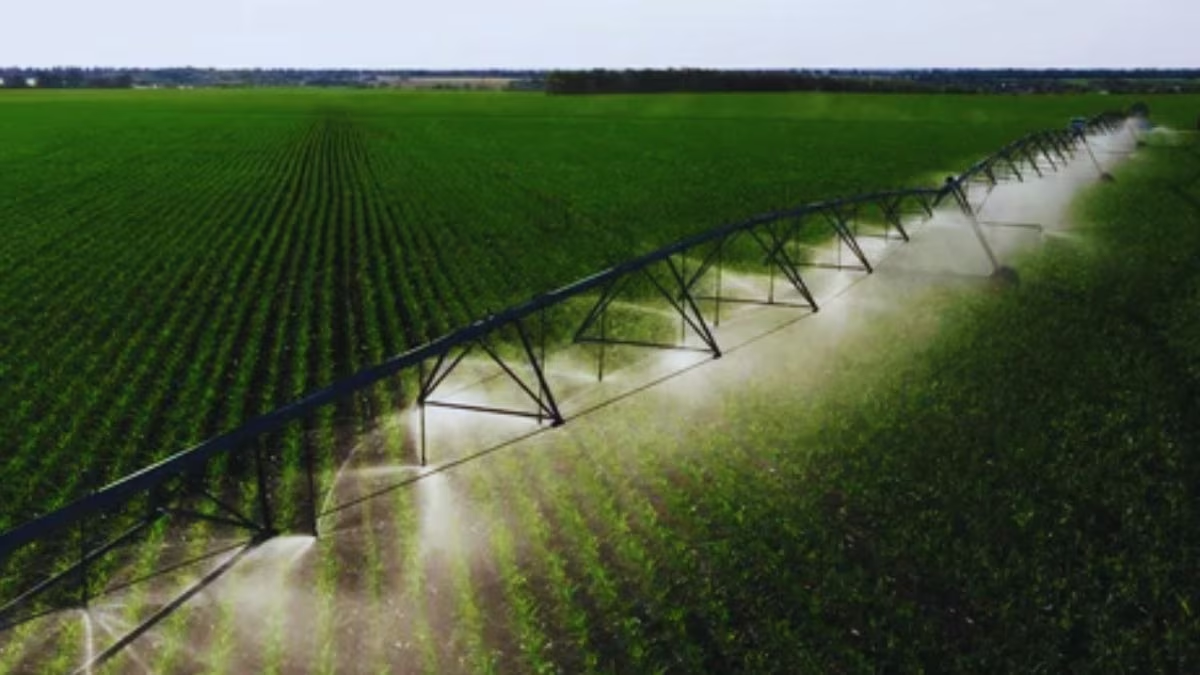Rajasthan News Desk !!! Thar Desert is that part of Rajasthan where the journey of animals in the scorching temperature of fifty degrees and human life thirsting for water in the scorching heat will shake your heart. The dying cattle in this scorching heat, the distressed cattle herders of Thar and their lives will shake you. Today we will tell you which trees survive here even in this burning sun.
In this video we will see how some animals have still maintained their dominance even in so much sunlight and bone-melting heat. Along with this, we will also get detailed information about every aspect of the scorching heat of the Thar Desert, including its formation, expansion, history, geography, environment, culture, climate and vegetation. Before going on this mysterious journey of the Thar Desert, if you have not yet subscribed to our channel, then like this video and subscribe to the channel right now and do tell us by commenting how you liked the video. And if you also want to watch a video on some topic, then do tell us by commenting what our next video should be. So let’s start the mysterious journey of Thar
The Thar Desert, also known as the Great Indian Desert, is spread across the northwest of India and the southeast of Pakistan from the eastern Sindh province to Punjab. It is said that the Thar Desert is named after the place Tharparkar located in Pakistan. However, the word Thar is derived from Thal, which literally means sand dunes. This is the only desert of India, spread over a vast area of about two lakh square kilometers. It is the 17th largest desert in the world and the 9th largest hot subtropical desert. 85% of the Thar is in India and 15% in Pakistan. In India, most of it falls in the state of Rajasthan, which is about 61% of the total area of Rajasthan. Jaisalmer, Barmer, Bikaner and Jodhpur districts are the main parts of the Thar Desert, but a large part of this desert also falls in Nagaur, Hanumangarh, Ganganagar and Churu districts. Thar is spread not only in Rajasthan but also in a vast area of provinces like Mirpur Khas, Hyderabad and Sindh of Pakistan.
Today’s Thar was an integral part of a vast ocean millions of years ago, which got separated from the ocean due to the movement of the earth’s plates over time. Due to geographical changes, the water of this entire area dried up completely and the land here emerged as sandy land. With time, due to climate change, this area gradually turned into a desert. Today, even though this area is barren and full of hundreds of challenges, it is such an extension of the beauty of nature that tells its own story. The sand found in the Thar Desert is a transformed form of rocks and sedimentary rocks of the Precambrian era, which are 2.5 billion to 57 lakh years old. The newest layer of sand of this desert is considered to be about 16 lakh years old, which came here and settled in the modern geological period by wind.
The surface of this desert is uneven and uneven, which is divided by small and big sand dunes, sandy plains and small barren hills. Some salt water lakes are found in this entire area, which are called ‘Dhaand’ in the local language. A total of seven categories of soil are found in the Thar region, which include desert soil, desert red soil, brown and black soil, red and yellow soil of the Terai, saline soil, seasonal shallow soil and soft friable soil found in hilly areas. All the soils found here are mainly rough, calcareous, and completely dry, in which a lot of lime is deposited.
The Thar Desert is spread between Rajputana and the lower part of the Indus River valley. Due to severe scarcity of water in this desert, it can only be crossed in groups. This desert also forms the border line between India and Pakistan by separating Sindh from South and North Western India. Due to this, when the Arabs conquered the Sindh region in 1710 AD, they could not expand their empire in India due to this desert. On the other hand, the Thar Desert also prevented the British from establishing their supremacy over Sindh for some time. Being the gateway to Afghanistan and Punjab, the British had their eyes set on the Sindh province. However, later after the British acquired the Sindh province, this desert became a part of the Indian British Empire, which was later divided into India and Pakistan.
When the earth here blazes in the heat of summer and the temperature touches fifty degrees Celsius, how do the animals and plants here face this challenge? This is really no less than a miracle, but not every animal is so strong. In the early summer, the cattle go far away in search of fodder and burn their bodies in this scorching heat due to lack of water. Since the only livelihood in this area is animal husbandry, the severe heat, lack of water and complex climate are the biggest challenges for the cattle rearers.
The diverse ecosystem, dry vegetation, human culture and animal life of the Thar Desert are quite different from other deserts. About 23 species of lizards and 25 species of snakes are found in the Thar Desert. Apart from this, blackbuck and chinkara etc. are also seen in the area connected to Kutch in Gujarat. Among the bird species, peacocks, eagles, harriers, falcons, buzzards, kestrels and vultures are found here. Also, some such wild species are found in the Thar Desert which are on the verge of extinction. The Great Indian Desert is mainly known for Blackbuck, Great Indian Bustard, Indian wild ass, Caracal, Golden Fox etc. Along with this, Desert National Park is located in Jaisalmer of Thar Desert, where there is a collection site of fossils of about 180 million years old animals and plants. In Desert National Park, you can also see 6 million year old dinosaur fossils.
Many types of vegetation are found in the Thar Desert including valuable species of herbs, these mainly include Acacia jacquemontii, Balanites roxburghii, Calotropis procera, Lycium barbarum, Liberon barbernica, Ziziphus, Zarber, Suaeda fruticosa, Crotalaria burhia, Aerva liptadenia pyrotechnica, Lizabar bar, Liberon berberinia, Mimosa hamata, Octochloa compressa, Javanica, Bacchus multiflorum, Lasiurus scindapsus, Dichanthium annulatus, Dactyloctenium sciaticum, Cenchrus setigrus, Doob Ghas, Dentum turgidum, Kutki, Cenchrus biflorus, Sporobolus marginatus marginata, etc.
Despite the diversity in customs, traditions and costumes, it is a wonderful example of India’s unity. People of both Hindu and Muslim communities live in Thar, who are divided on the basis of population, complex economic and social factors. People living in the Thar desert are brave and courageous, who are filled with the feeling of patriotism. Due to lack of many means of employment, animal husbandry is the main occupation here. People here rear animals like cows, bulls, buffaloes, goats, sheep, horses and donkeys, but camels are mainly reared here. The most important natural resource here is grass, which not only provides natural fodder for animals, but the local people also make medicines from it.
In the Thar Desert, where it is difficult to even take a breath, about 40 lakh people have settled there. These are the people whose livelihood is dependent on animal husbandry and life on nature. Here, people have to walk several kilometers to get a pot of water, sometimes this distance can be up to 30 to 40 kilometers. Water is stored here in various ways, in which the tanka system is used the most. In this, people build a water tank inside the ground around their houses, from a lower part of it, rain water goes into the tank, which can be used according to water needs in future. Due to extreme shortage of water in this area, seasonal rain water is collected in ponds and reservoirs, and it is used for drinking and other domestic purposes. Due to the water being salty and the water level being very low, underground water is not used.
Apart from wells and reservoirs, canals are also the main source of water in Thar. Crops like wheat and cotton are grown in this area when water is available. To overcome the water shortage in this area, Sukkar Dam was built on the Indus River in 1932. Along with this, the Gang Canal originating from Hari’s Barrage built at the confluence of Sutlej and Beas rivers in Punjab irrigates the northern part of Thar. This canal reaches Thar after traveling about 470 kilometers in the south-west direction of India.
Although there are not many means of transport in the Thar Desert, but due to its border with Pakistan, Jaisalmer has been connected to the airport and railway. There is a railway line in the southern part of Thar which reaches Suratgarh via Merta Road to Bikaner, and there is another railway line in the northern part which connects Jodhpur and Jaisalmer. The Thar Desert is moving towards the north-east at a speed of half a kilometer every year, due to which it will completely change the land use map of India in the coming time. According to a report of ISRO, the Thar Desert, which is called the identity of Rajasthan, is now spreading its feet in Haryana, Punjab, Uttar Pradesh and Madhya Pradesh as well. This has created a possibility of livelihood crisis for sixty percent of the people of these states who are earning their livelihood from agriculture and forestry. But to stop the Thar Desert from moving forward, the Government of India has built the 649 kilometer long Indira Gandhi Canal. A successful attempt is being made to bring greenery in the desert areas through this canal. If you want to know the complete details of the construction of Indira Gandhi Canal till it changed the lives of the people of Rajasthan, then you will find the link of its video in the description. Along with this, the world’s oldest Aravalli mountain range also prevents the Thar Desert from expanding into the rest of the country. To know in detail about the Aravalli mountain range, you will find its link in the description of the video.
So friends, this was the famous Thar Desert of Rajasthan, thank you for watching the video, if you liked this video then please give your opinion by commenting, subscribe to the channel, like the video, and share it with your friends and family, to watch more such videos, click on the playlist given above and know all the information related to the famous temples, mosques, forts and tourist places of Rajasthan.


